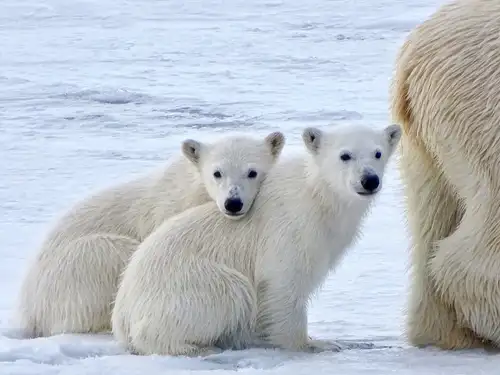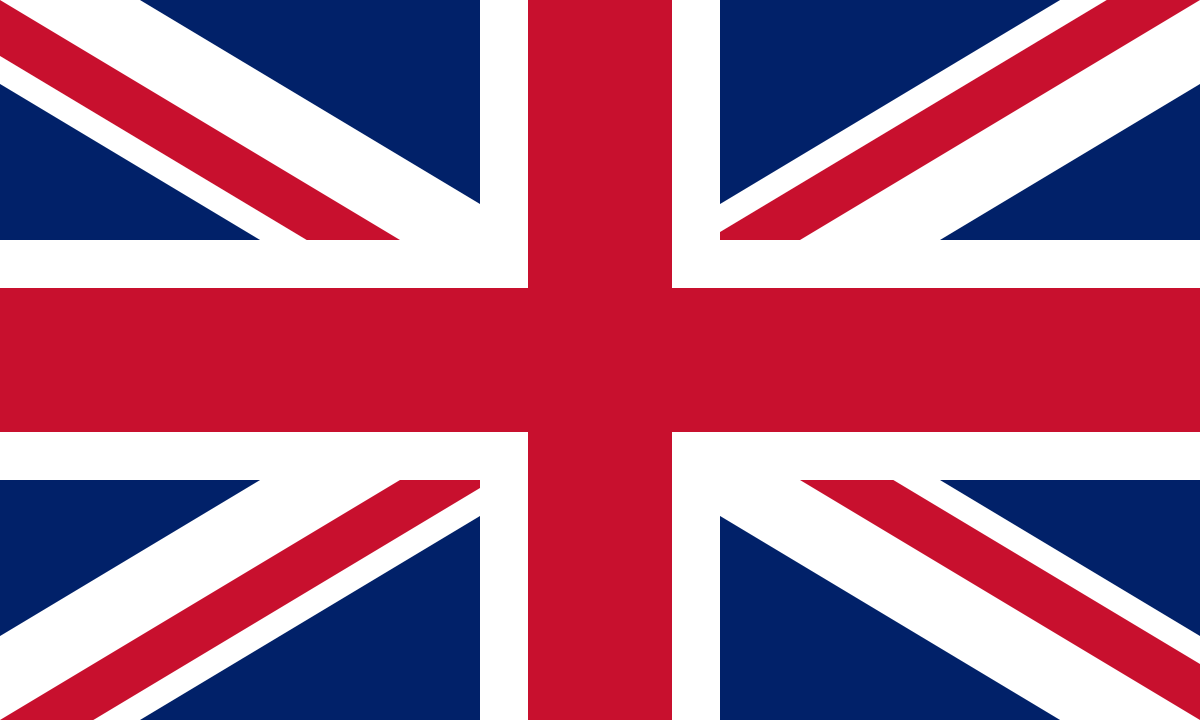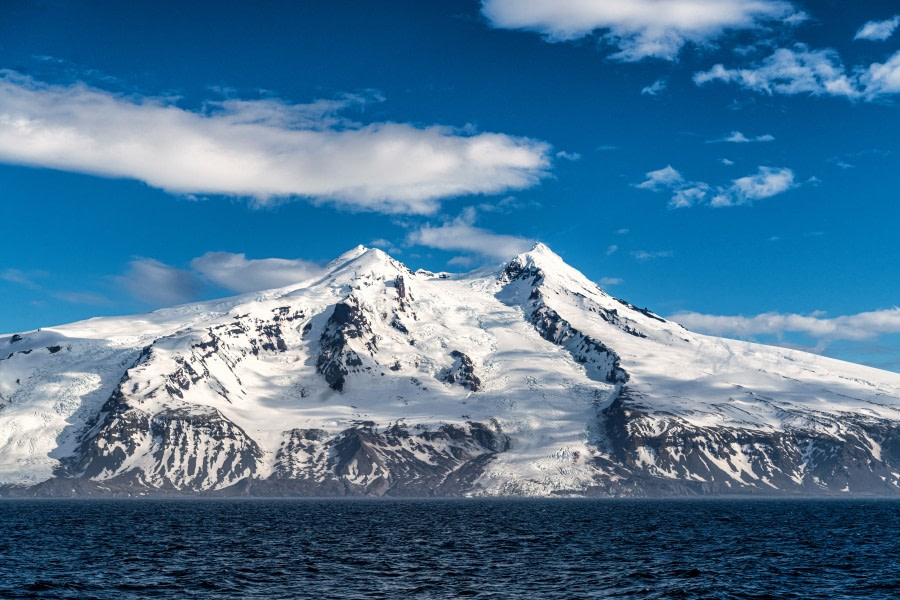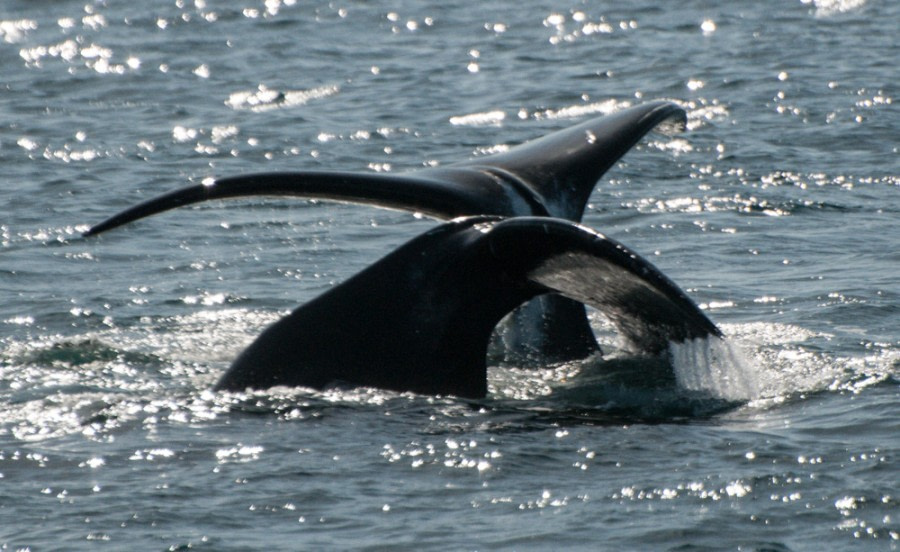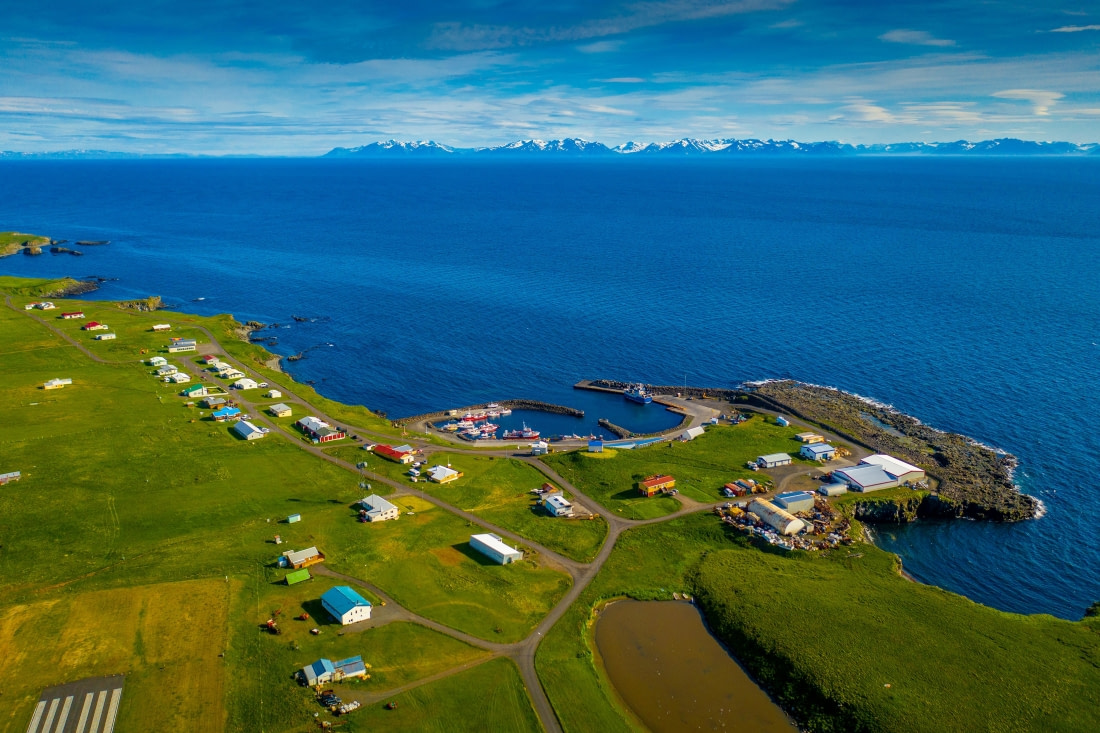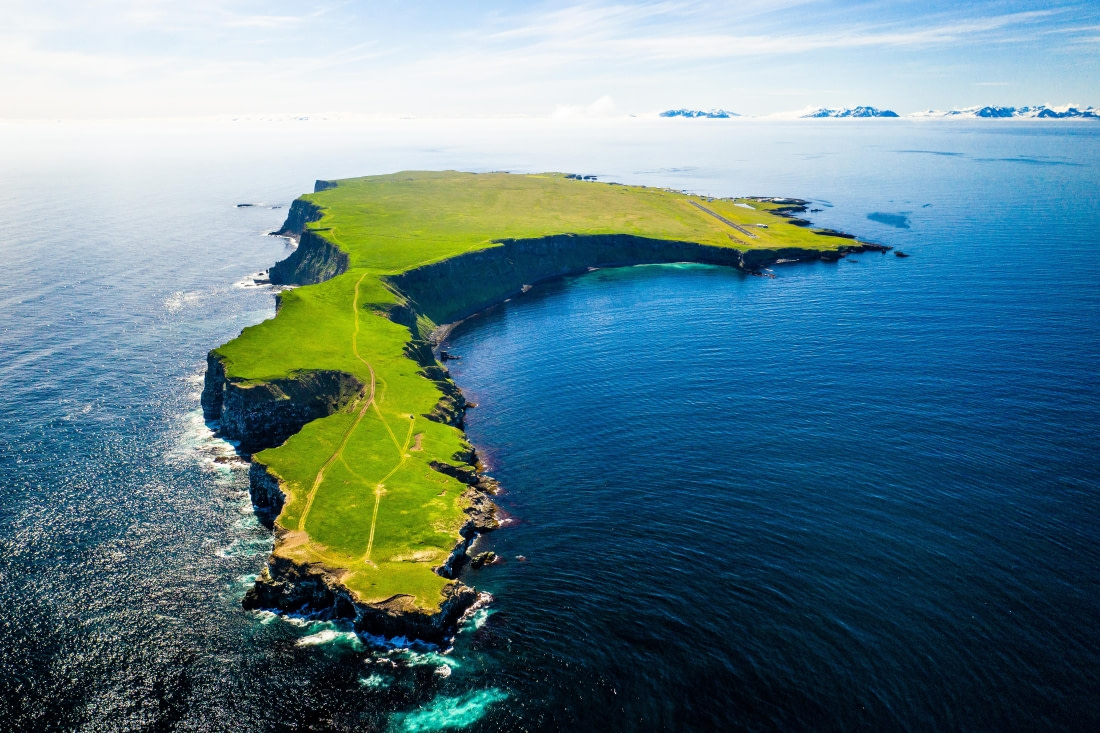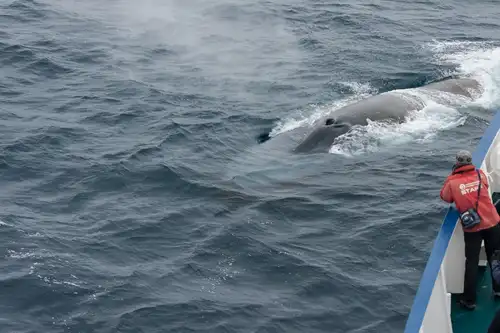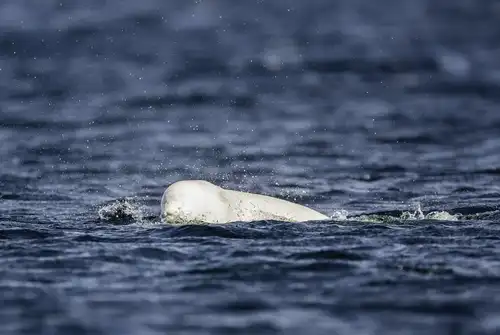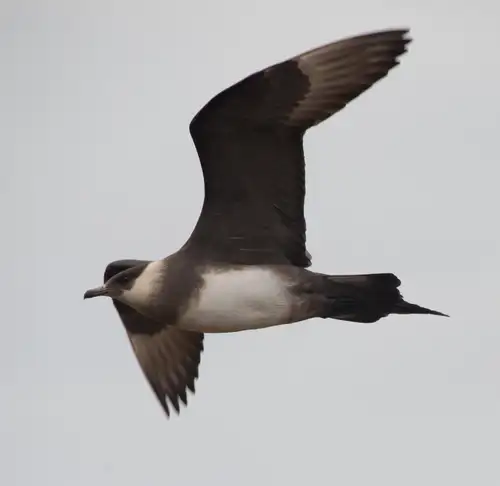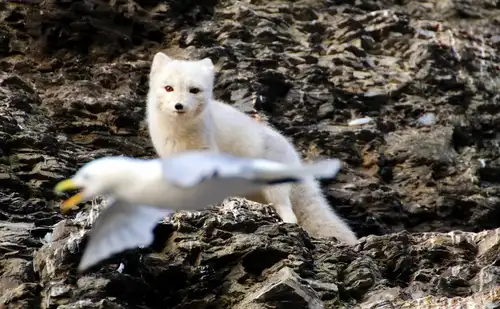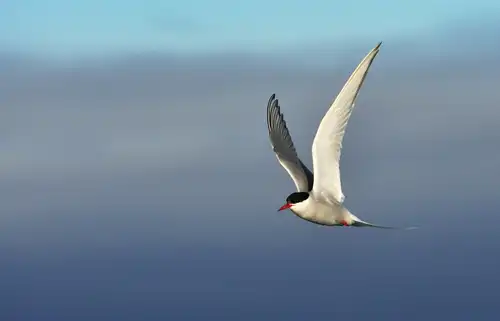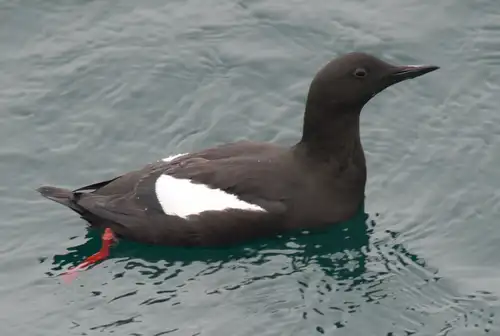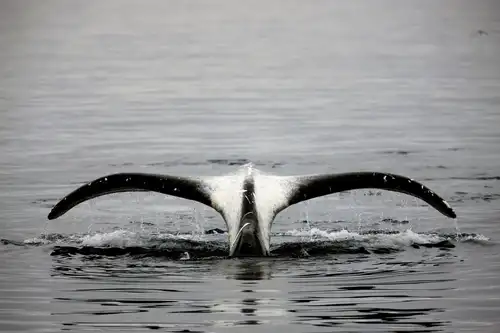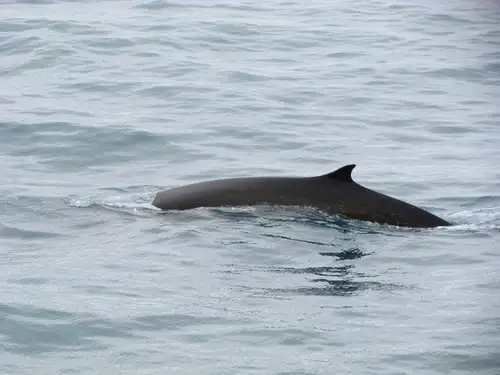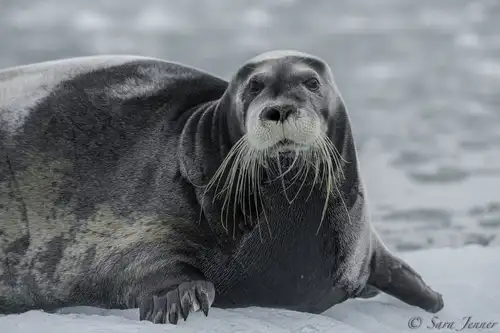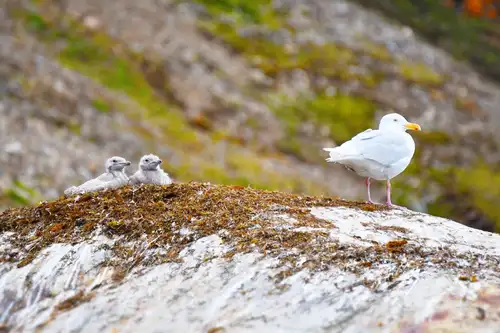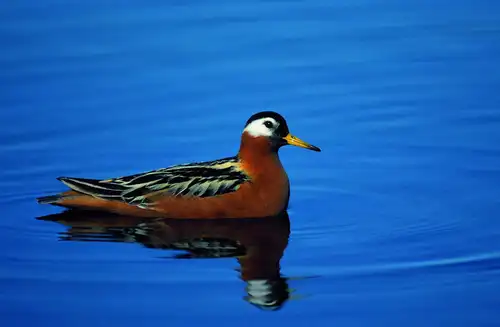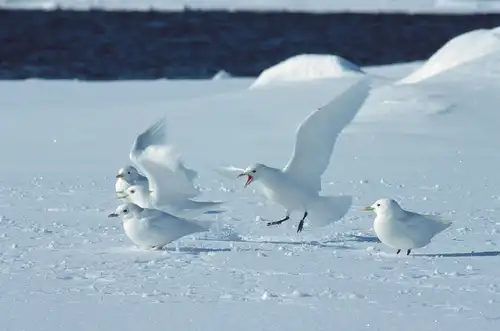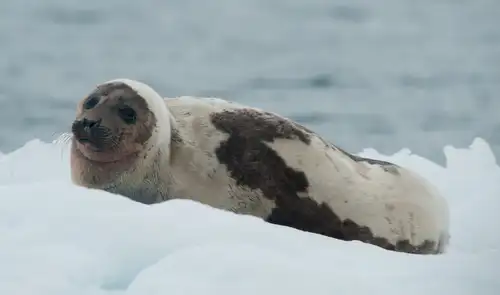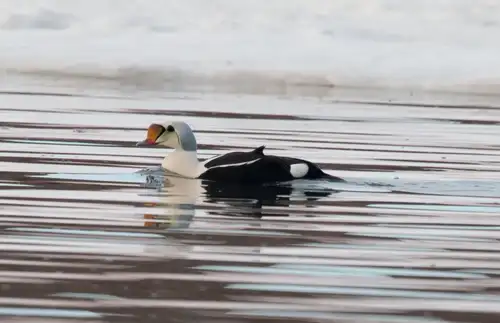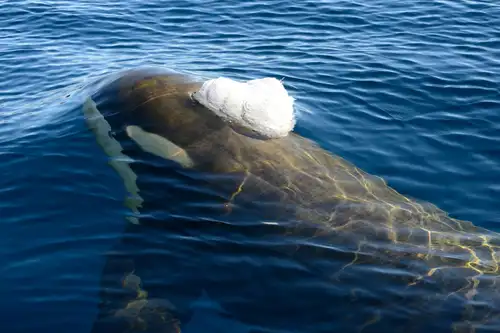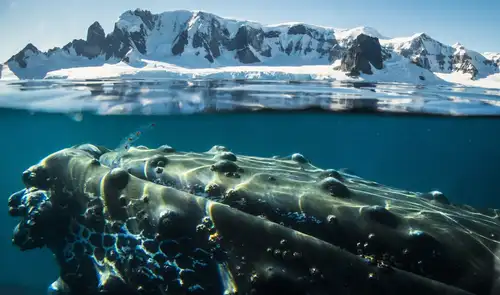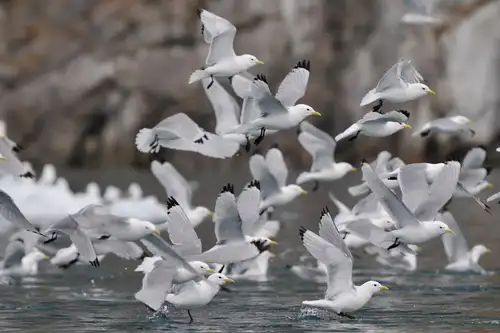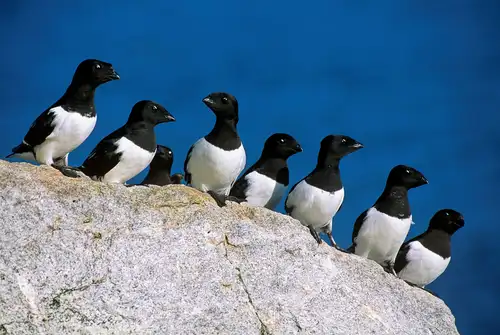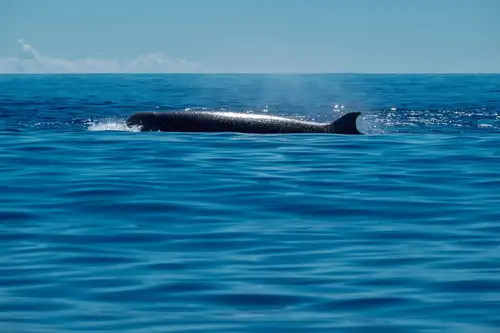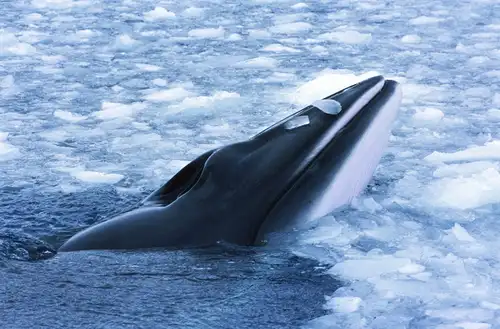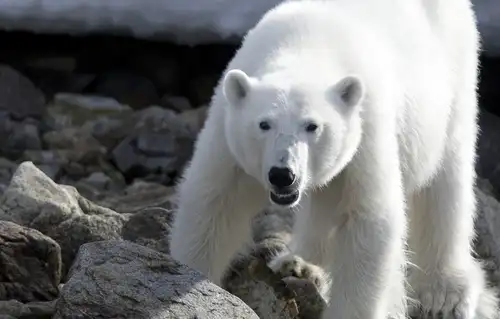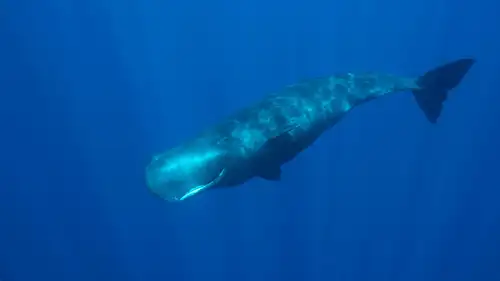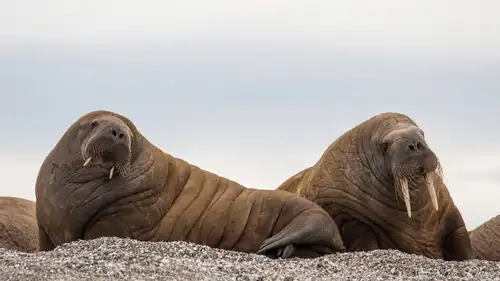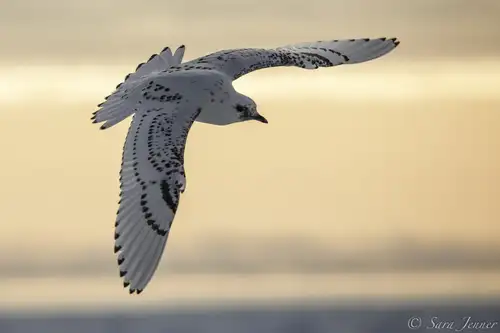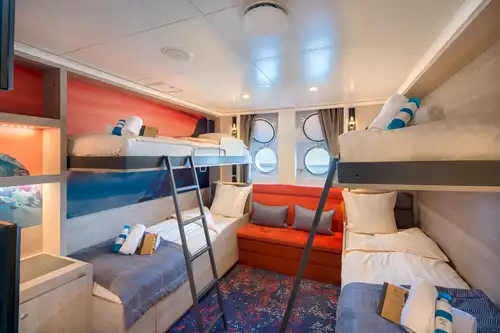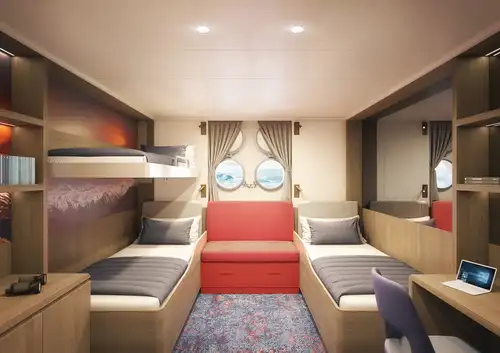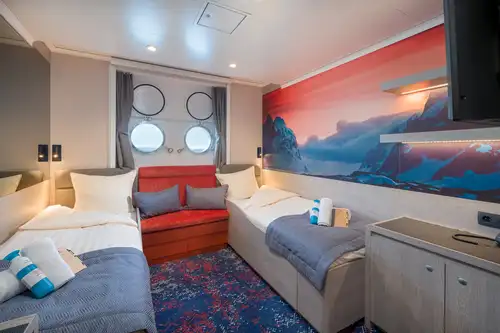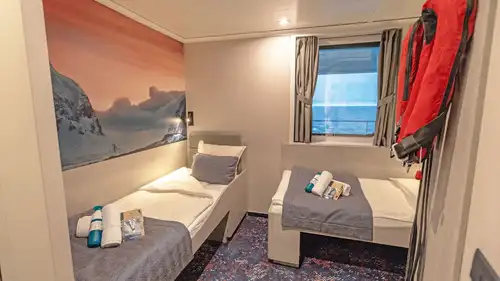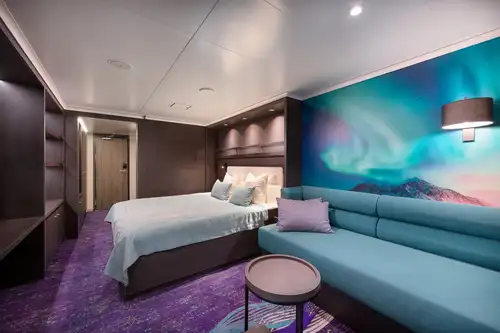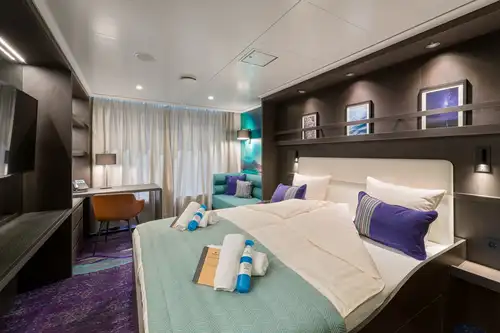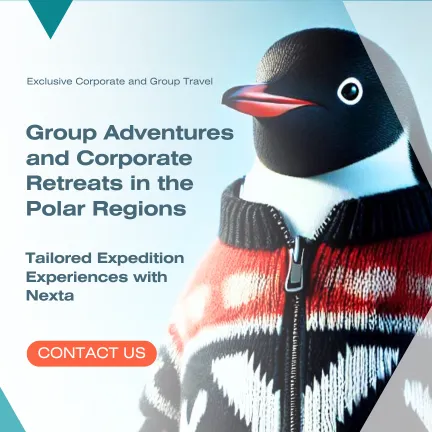

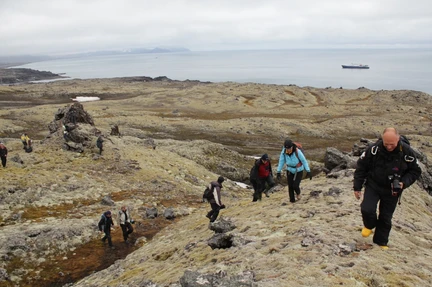













































 9 Days/8 Nights
9 Days/8 Nights




Start of the Expedition
In the afternoon, you board the m/v Hondius in Akureyri, a historic fishing port in North Iceland. We head north through Eyafjordur, one of Iceland's longest fjords, where we might spot our first whales as we reach the open sea.
Exploring the Arctic Circle
Grimsey Island
We visit Grimsey Island, which lies on the Arctic Circle. This island has a friendly fishing village and is home to many birds like puffins and Arctic terns. In the evening, we pass by Kolbeinsey, a small uninhabited island, and continue north, experiencing continuous daylight.
Journey Northward
As we sail toward the remote Jan Mayen, we search for whales such as humpbacks and orcas. The ship may change course to improve wildlife viewing opportunities.
Jan Mayen's Volcanic Beauty
We arrive at Jan Mayen, a volcanic island with the towering Mt. Beerenberg. With permission, you can visit the weather station and explore the remains of a 17th-century Dutch whaling station, surrounded by mossy landscapes.
Midnight Sun and Ice Edge
Under the midnight sun, we sail north along the ice edge, looking for bowhead whales, polar bears, and seabirds. We then head west to the continental shelf of West Spitsbergen, where fin and minke whales are often seen.
Spitsbergen's Wildlife
In Forlandsundet, between Spitsbergen and Prins Karls Forland, you might see walruses. Alternatively, we may explore St. Johns Fjord or Isfjorden, where cliffs are home to nesting birds and Arctic foxes. Reindeer graze nearby, offering great photo opportunities.
End of the Expedition in Longyearbyen
With unforgettable Arctic memories and stunning photos, you disembark in Longyearbyen, Spitsbergen's administrative center. Though the journey ends, the spirit of Arctic adventure remains with you!





























































































m/v Hondius
Hondius is the world’s first-registered Polar Class 6 vessel and was built from the ground up for expedition cruising.

Specifications
| Passengers: | 170 in 80 cabins |
| Staff & crew: | Crew 57 | Guides 13 | Doctor 1 |
| Length: | 107.6 meters |
| Breadth: | 17.6 meters |
| Draft: | 5.30 meters |
| Ice class: | Polar Class 6 (equivalent 1A-Super) |
| Displacement: | 5,590 tonnes |
| Propulsion: | 2 x ABC main engines; total 4,200 kW |
| Speed: | 15 knots |
Cabins Gallery


Ship Interior Gallery


Ship Exterior Gallery


Hondius is the first-registered Polar Class 6 vessel in the world, meeting the latest and highest Lloyd’s Register standards for ice-strengthened cruise ships. Surpassing the requirements of the Polar Code adopted by the International Maritime Organization (IMO), Hondius represents the most flexible, advanced, innovative touring vessel in the polar regions, thoroughly optimized for exploratory voyages that provide you the utmost first-hand contact with the Arctic and Antarctica.
Happier polar passengers, healthier polar environment
Not only will the numerous amenities and on-board entertainments help make your Hondius voyage truly memorable, this ship also gives you the peace of mind that comes with choosing one of the most environmentally friendly vessel on the polar seas.
Hondius uses LED lighting, steam heating, bio-degradable paints and lubricants, and state-of-the-art power management systems that keep fuel consumption and CO2 levels minimal. This means that when you sail aboard Hondius, you get to enjoy the exotic landscapes and wildlife as much as possible while impacting them as little as possible.
Hotel comfort, expedition class
The best view is always on the outer deck or the bridge. Hondius offers high-quality accommodation for 170 passengers in six grand suites with balconies (27 square meters, 291 square feet), eight junior suites (19 to 20 square meters, 205 to 215 square feet), eight superior cabins (20 to 21 square meters, 215 to 226 square feet), 11 twin deluxe cabins, (19 to 21 square meters, 205 to 226 square feet), 14 twin window cabins (12 to 14 square meters, 129 to 151 square feet) as well as 27 twin porthole cabins, two triple porthole cabins, and four quadruple porthole cabins that vary in size from 12 to 18 square meters, or 129 to 194 square feet.
One deck consists of a large observation lounge and a separate lecture room, which are reserved for a wide variety of interactive workshops, exhibitions, and performances particular to Hondius.
Swift & safe ship-to-shore operations
It is our philosophy to keep sea time short so that we can focus instead on fast, effective access to shore and near-shore activities. To give you the maximum contact with the nature and wildlife you traveled so far to see, we employ a tough fleet of rigid-hull inflatable Zodiac boats that guarantee swift and safe landing operations for the passengers. Hondius has two separate gangways and a sheltered indoor Zodiac boarding area that can also be used for special outdoor activities, such as kayaking.
What to wear
In keeping with the spirit of the expedition, dress on board is informal. Bring casual and comfortable clothing for all activities, and keep in mind that much of the scenery can be appreciated from the deck ― which can be slippery. Bring sturdy shoes with no-slip soles, and make sure your parka is never far away in case one of our crew shouts “Whales!” over the loudspeaker and you have to dash outside at a moment’s notice. Opt for layers, as it is comfortably warm aboard the ship though often cold on deck.
How to pay
Refreshments and souvenirs will be charged to your cabin. The day before departure you can settle your bill with the hotel manager, paying by credit card (Visa or MasterCard) or cash (euro, or in some cases dollar). We cannot, however, accept checks. Though the prices and standard currency on board is in the euro, other currencies may be accepted at the discretion of the hotel manager, at prevailing rates.
Electric current
The electrical supply aboard ship is 220v, 60Hz. Electrical outlets are standard European with two thick round pins, so some passengers may need a 220v/110v converter.
Gratuities
The customary gratuity to the ship’s service personnel is made as a blanket contribution at the end of the voyage and is divided among the crew. Tipping is a personal matter, and the amount you wish to give is at your sole discretion. As a generally accepted guideline, we suggest 15 euros per passenger per day. It is better for the crew if you give cash.
Non-smoking policy
We have a non-smoking policy inside all our vessels, though you can smoke in certain designated areas. We ask that you please respect the wishes of non-smokers.
Your physical condition
You must be in good overall health and be able to walk several hours per day. The expedition is ship-based and physically not very demanding, but we spend as much time as possible on shore. You are, however, welcome to remain aboard the ship if you prefer. To join most excursions you must be able to get up and down the steep gangway ― from the ship to the water level ― to board the Zodiacs. Staff will assist you in and out of the boats, and boarding will become progressively easier with practice, but conditions on shore can be slippery and rocky. Remember, you will be traveling in remote areas without access to sophisticated medical facilities, so you must not join this expedition if you have a life-threatening condition or need daily medical treatment.
- When an activity is cancelled due to weather (or any other) conditions, we will offer an alternative activity when possible. We may also reschedule the activity for another time. If neither option is possible due to local conditions, however, we can offer no refund for the missing activity. This is the unpredictable nature of expedition travel. Sometimes we are lucky, sometimes we are not. Itineraries are always subject to change due to ice, weather, or wildlife conditions.
- Children under the age of 18 are not allowed to stay in a cabin without parental or adult supervision.
- When you make a confirmed reservation, we require a 40% deposit. But if the reservation is made within two months prior to departure, the full price of the voyage is due at the time of booking.
- No, you are not able to get cash advances on the vessel.
- Although it is not always cold, warm and waterproof clothing is needed on Jan Mayen. Waterproof trousers and jacket against wind, rain and salt spray coming into the zodiac. Furthermore fleece jackets, gloves and a warm hat. Rubber-boots for the landings are provided on board our vessels Plancius, Ortelius and Hondius.
- The weather around Jan Mayen is often not so good: it is said the weather is foul for 362 days of the year. There may be heavy rain, wind and fog but then, soon after, the sun may break through and the air becomes clear. In June, when our ships visit Jan Mayen, the average temperature is around 2º to 3ºC (36º to 37ºF).
- The Hondius was built in Croatia in 2018 and delivered in 2019.
- The number of passengers is limited to 174 on the Hondius. Furthermore the vessel is manned by 24 highly experienced international nautical crew, 32-34 international hotel crew, 13 expedition staff (1 expedition leader, 2 assistant expedition leaders and 10 guides/lecturers) and 1 doctor.
You May Also Like



Alpine Peaks of Spitsbergen, Ski & Sail
 8 Days / 7 Nights
8 Days / 7 Nights

Arctic Ocean - Fair Isle, Jan Mayen, Ice Edge, Spitsbergen, Birding
 10 Days / 9 Nights
10 Days / 9 Nights

North Spitsbergen - Arctic Spring , Hike & Sail
 8 Days / 7 Nights
8 Days / 7 Nights

North Spitsbergen Explorer - Into the pack ice - Polar Bear Special
 8 Days / 7 Nights
8 Days / 7 Nights

Arctic Ocean - Jan Mayen, Ice edge, Spitsbergen, Birding
 9 Days / 8 Nights
9 Days / 8 Nights

Arctic Ocean - Fair Isle, Jan Mayen, Ice edge, Spitsbergen, Birding - Summer Solstice
 10 Days / 9 Nights
10 Days / 9 Nights

North Spitsbergen Explorer - Versatile landscapes, sea ice & wildlife
 8 Days / 7 Nights
8 Days / 7 Nights

North Spitsbergen Basecamp – Summer Solstice - Free Kayaking, Hiking, Photo Workshop, Diving (supplemented)
 8 Days / 7 Nights
8 Days / 7 Nights
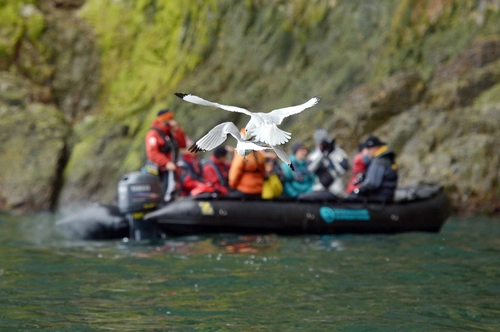
North Spitsbergen Explorer - Versatile landscapes, sea ice & wildlife - Summer Solstice
 8 Days / 7 Nights
8 Days / 7 Nights

North Spitsbergen - Arctic Summer
 11 Days / 10 Nights
11 Days / 10 Nights

East Spitsbergen - Home of the Polar Bear, Including Long Hikes & Cleaning the Shores
 8 Days / 7 Nights
8 Days / 7 Nights
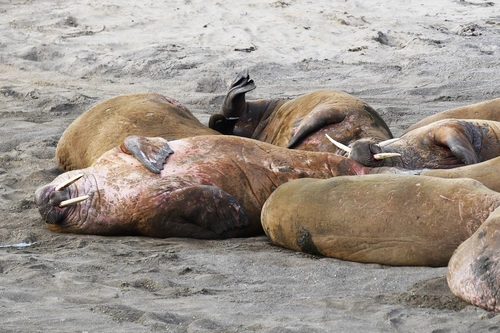
Around Spitsbergen, In the realm of Polar Bear & Ice
 10 Days / 9 Nights
10 Days / 9 Nights

North Spitsbergen Explorer – Into the Pack Ice – Polar Bear & Whale Special
 10 Days / 9 Nights
10 Days / 9 Nights

Northeast Greenland Solar Eclipse Explorer Voyage
 14 Days / 13 Nights
14 Days / 13 Nights

Spitsbergen - Northeast Greenland, Fly & Sail
 20 Days / 19 Nights
20 Days / 19 Nights

Around Spitsbergen incl. Nordaustlandet
 10 Days / 9 Nights
10 Days / 9 Nights

Alpine Peaks of Spitsbergen - Ski & Sail
 8 Days / 7 Nights
8 Days / 7 Nights

Arctic Ocean - Fair Isle, Jan Mayen, Ice Edge, Spitsbergen, Birding Special
 10 Days / 9 Nights
10 Days / 9 Nights

North Spitsbergen Explorer - Versatile Landscapes, Sea Ice & Wildlife
 8 Days / 7 Nights
8 Days / 7 Nights

North Spitsbergen Explorer - Into the Pack Ice - Polar Bear Special
 8 Days / 7 Nights
8 Days / 7 Nights

North Spitsbergen, Arctic Summer - Summer Solstice
 11 Days / 10 Nights
11 Days / 10 Nights

North Spitsbergen Explorer - Versatile Landscapes, Sea Ice & Wildlife - Summer Solstice
 8 Days / 7 Nights
8 Days / 7 Nights

North Spitsbergen Explorer - Into the Pack Ice - Polar Bear Special - Summer Solstice
 8 Days / 7 Nights
8 Days / 7 Nights

Arctic Ocean - Spitsbergen: Jan Mayen, Ice Edge & Birding - Summer Solstice
 9 Days / 8 Nights
9 Days / 8 Nights

North Spitsbergen Basecamp - Free kayaking, Hiking, Photo Workshop
 8 Days / 7 Nights
8 Days / 7 Nights

North Spitsbergen, Arctic Summer
 11 Days / 10 Nights
11 Days / 10 Nights

Around Spitsbergen, in the Icy Realm of the Polar Bear
 10 Days / 9 Nights
10 Days / 9 Nights

A Taste of North Spitsbergen - Compact Arctic Adventure
 6 Days / 5 Nights
6 Days / 5 Nights

South Spitsbergen Explorer - Bear Island - Diving (supplemented)
 10 Days / 9 Nights
10 Days / 9 Nights

Around Spitsbergen - Arctic Summer
 15 Days / 14 Nights
15 Days / 14 Nights

Around Spitsbergen and Nordaustlandet, In the Icy Realm of the Polar Bear
 10 Days / 9 Nights
10 Days / 9 Nights

Spitsbergen, Northeast Greenland & Scoresby Sund, Including Long Hikes
 14 Days / 13 Nights
14 Days / 13 Nights

South Spitsbergen, Bear Island & Mainland Norway - Aurora Borealis
 6 Days / 5 Nights
6 Days / 5 Nights

Arctic Foxes: Constant Gardeners of the Arctic
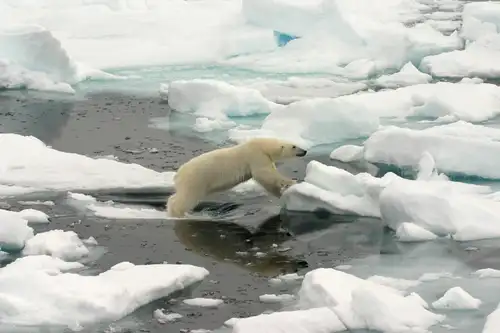
Spitsbergen: a true polar bear trip

Polar bear encounter in Spitsbergen

Polar Bear Sets Impressive New Diving Record
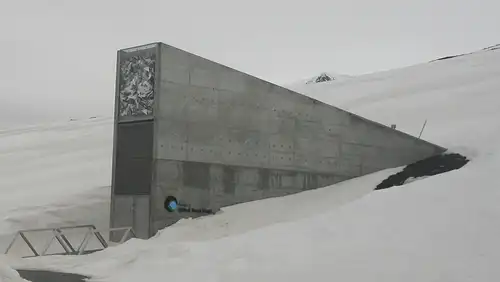
Inside the Svalbard Global Seed Vault
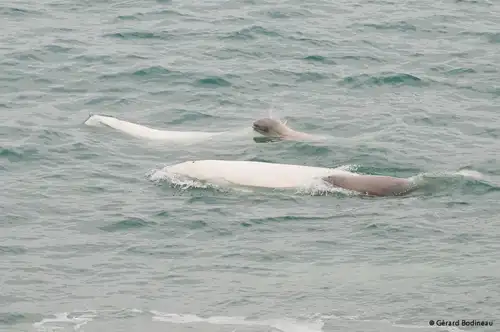
The Mysteries of the Beluga Whale
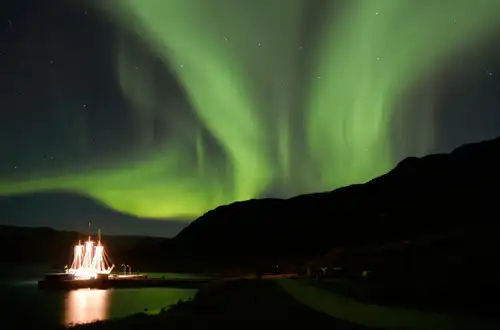
The Northern Lights dancing across the skies
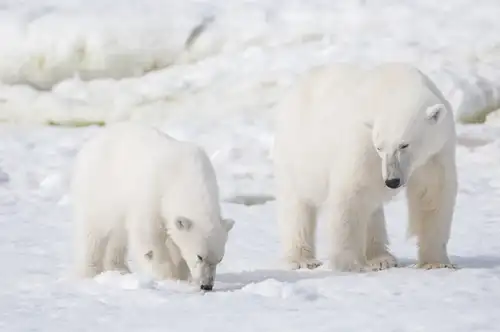
The polar bear: king of the Arctic food chain

Birding Opportunities Abound in Spitsbergen
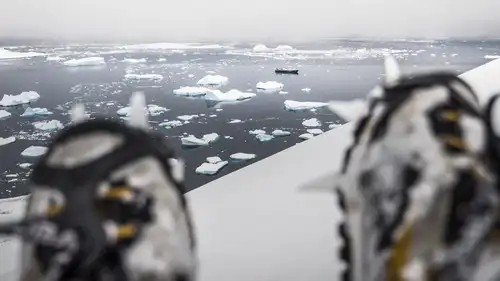
Arctic and Antarctic Basecamp Cruises – Choose Your Own Adventure
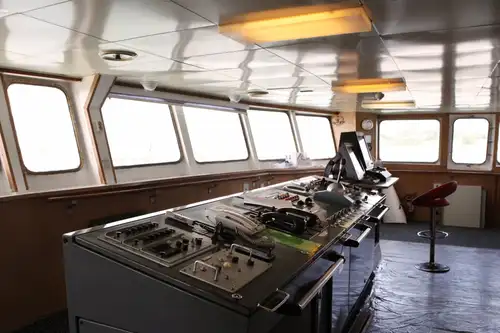
Navigating by touch through the sea ice
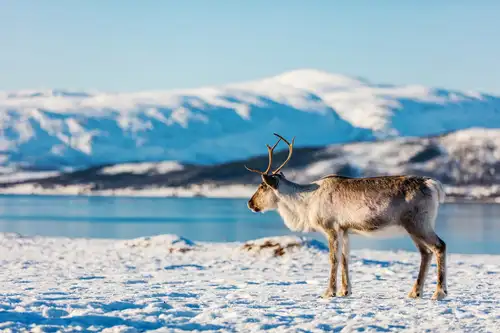
Eight Engaging Reindeer Facts

The Ice-Jewelled Geology of Spitsbergen
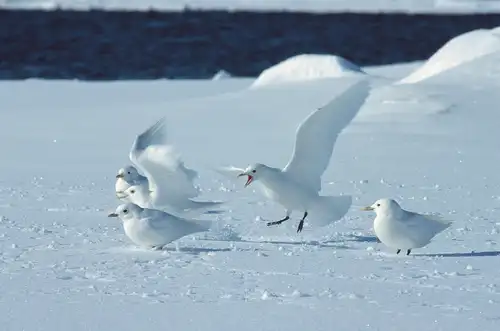
Birds of the North: 29 Arctic Birds and Seabirds
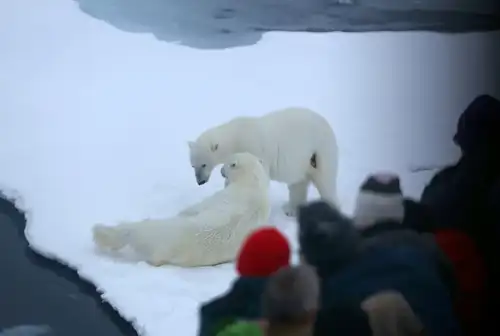
The Pack Ice and Polar Bears of North Spitsbergen

Amphibian, reptiles and herbivore mammals in the Arctic

10 Tips for Photographing the Northern Lights
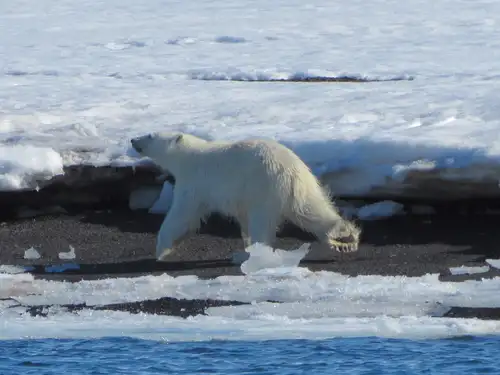
Polar bear feast
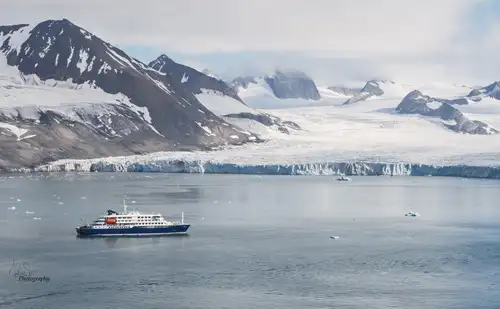
What’s so Special about East Spitsbergen?
